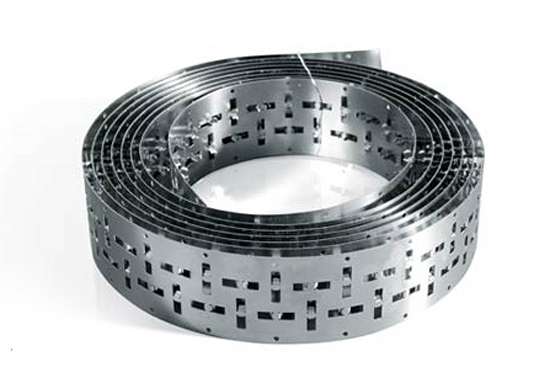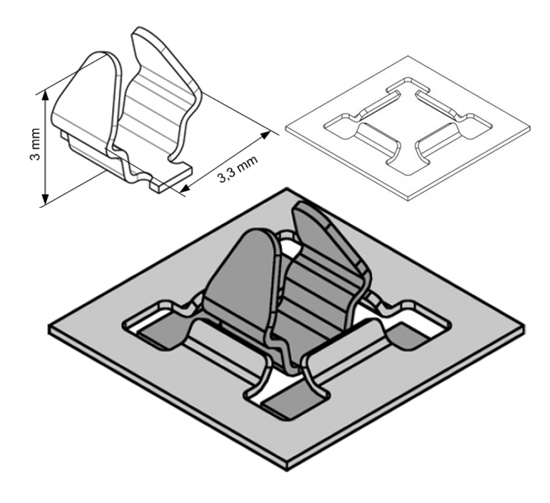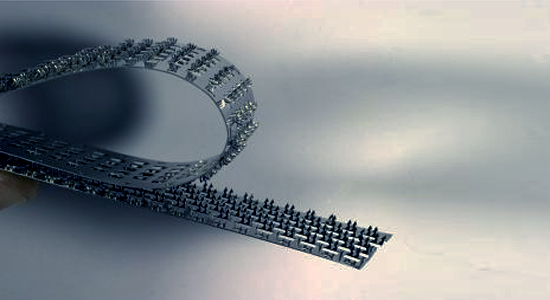Tuesday, December 28, 2010
Thoughts on Creation
Sunday, May 16, 2010
Tuesday, May 4, 2010
Redefining "Dis"Ability
Monday, April 26, 2010
Tim Brown on Simplicity vs. Minimalism
"There is a discussion going on amongst some of my colleagues about the merits of minimalism versus simplicity.
My own view is that minimalism has come to represent a style and as such is limited in its usefulness. It represents a reaction to complexity whereas simplicity relies on an understanding of the complex. This is an important difference. One is about the surface, about the stuff. The other is about our experience and requires a deep appreciation of how things work so as to make them just simple enough.
Minimalism is often all too obvious while great simplicity can be practically invisible..." Tim Brown, IDEOThursday, April 22, 2010
Bio-Mimetics
Jumped to TED (but ofcourse)
and found these really cool videos :)
check em out....
Tuesday, March 30, 2010
IsenSeven: The Video Marvel
Isenseven - TIMES from Vincent Urban on Vimeo.
"Times" is a self-contained short-clip by Isenseven and at the same time the last part of the upcoming full-length movie "Let's Go Get Lost". As this clip will be edited slightly different in the final movie, we decided to publish this original version online already now.
This clip contains a collection of footage we gathered throughout the season and during the summer days in our hometown Munich as well as in Berlin, New York, Tokyo, Bejing, Portland, Barcelona and many other places.
We like to thank all of our close friends for a great year 2009 and especially thank those guys for riding their skateboards for us: Conny Mirbach, Christopher Geyer, Jonas Rosenbauer, Michael Von Fintel, Christoph Friedmann, Dennis Gläser, Timo Kavermann, Mack McKelton, Gunes Ozdogan, Marcus Sweeney, Philipp Schuster and John Zelehoski.
Filmed by: Felix Urbauer, Alex Schiller, Vincent Urban, Niko Jentsch, Magnus Törnkvist
Edited by: Vincent Urban
As Munich plays a major role in this clip, we are happy we could use a song from a local band for this project. The song's called "Mindestens In 1000 Jahren" by Frittenbude from the Album "Nachtigall". Support the band and be friends with them on Myspace! (www.myspace.com/frittenbude)
Tuesday, March 9, 2010
A Complex Simplicity Paradigm


Monday, February 15, 2010
T-Shaped Designers
Found a term today: T-Shaped Designers.
(http://www.designsojourn.com/only-god-is-t-shaped/)
I have been thinking about T-Shaped Designers for a long time now. How to be one, what does being one really mean and how effective can one be. Made popular sometime in 2005 by IDEO’s Tim Brown, T-Shape Designers are defined as:
…people who are so inquisitive about the world that they’re willing to try to do what you do. We call them “T-shaped people.” They have a principal skill that describes the vertical leg of the T — they’re mechanical engineers or industrial designers. But they are so empathetic that they can branch out into other skills, such as anthropology, and do them as well. They are able to explore insights from many different perspectives and recognize patterns of behavior that point to a universal human need. ~ Fast Company
I touch on this topic again in 2007, by calling these T-Shape Designers “Renaissance Designers” in my blog series: 7 Habits of Highly Effective Designers.
However after almost 5 years contemplating the existence of such T-Shaped designers and observing the many designers I know, I have to admit that such a personality trait is a myth. Honestly, to date I have never seen or met any designer that I would truly qualify as T-shaped, including myself.
I actually spoke to Chris Bangle about this and tried to tap into his vast experience as someone who hires talent. He agrees that while it was big in 2005, on one talks about this anymore probably because it was never true.
I postulated that such a personality trait is impossible simply because humans are just not wired to multi-task well, or to wear different hats for that matter. Even if a designer has the capability, he or she will lack the time or opportunity.
Therefore the reality is, instead of being a big “T”, you will find designers that are either a little “t” or a “T” with a short vertical stick.

Little “t-shape” designers are essentially most of who we are. Despite many of us feeling that we are “Jacks of all trades and masters of none” after our 4 years of design school. We eventually settle into a specialty of design and designing.

Stunted “T-Shaped” designers are often the senior creatives, the design managers, team leaders and entrepreneurs. Many deal with all the different touch points in the design development cycle, but do not have the opportunity to dive into detail. Some, like the entrepreneurs, may be in the position to do it all, but often will have to either accept work of lesser quality or learn to delegate and outsource.
———-
So at the end of the day, being a T-Shaped is just a nice story for designers to aspire to. While the value of a T-Shaped team is undeniable, it is probably more realistic to build a multi-disciplinary team of experts to work on complex (or wicked?) problems. Now that is something that has withstood the test of time.
What do you think? I’m looking forward to hearing your comments.
Friday, February 5, 2010
Steel-Velcro
imagine a car with this on the back side and you can velcro 2 additional seats when they fall short!! :D
or a building that got boring in architecture.. change the structure with these velcro pillars!
as i let my mind wander enjoy the read.. :)
metallic velcro: steel hook and loop fastener

'flamingo' fastener
photo credit: TUM
hook and loop fasteners have become commonplace features of both industry and households.
however, they have one snag: they are too weak for many applications.hook and loop
fasteners made of spring steel have now been developed at the institute of metal forming
and casting of the technische universitaet muenchen (TUM).
the device consists of hook tape and loop tape 0.2 mm thick.
these fasteners are resistant to chemicals and can withstand a tensile load
of up to 35 tonnes per square meter at temperatures as high as 800°C.

photo credit: TUM
spring steel hook elements deform elastically under light pressure to glide into openings
in a perforated tape, once inserted, they return to their original form and resist back pull
like an expanding rivet. numerous steel hooks can attach at any angle to the loops in the
perforated metal loop tape.

it can be mass-produced
photo credit: TUM
'metaklett' is a hook and loop fastener system developed by researchers at TUM,
the technische universitaet muenchen, under the leadership of professor hartmut
hoffmann (and as part of a joint project launched in 2005 with the federal ministry
of education and research / BMBF) in close cooperation with partners from industry.
'metaklett is a portmanteau of 'metall' and 'klettverschluss', which is the german generic
for velcro®. like velcro fasteners, 'metaklett' devices can be easy to secure and release,
yet they can withstand very strong mechanical stresses, high temperatures and harsh
chemicals. the unbeatable advantage of this hook and loop fastener is that it is easy
to close and open again, the principle therefore is put to a very wide range of uses,
for example air-conditioning and ventilation systems in building services engineering
and automotive construction.

hook HF 1 and loop LF1 combined
photo credit: TUM
the researchers created various three-dimensional models for the optimum interlocking
of the fastener elements on the computer.they then built the most promising candidates
as prototypes and subjected them to comprehensive tests. around 40 variations of the
geometry referred to as 'flamingo' alone were tested on the computer. they studied its adhesive
strength and reaction to extreme temperatures to establish the limits of its resilience.

'entenkopf" fastener
photo credit: TUM

a hybrid version with synthetic strap
photo credit: TUM
after testing, the institute settled on two variations: the 'flamingo' and 'entenkopf"
(or duck's head) models. the hook forms of the two systems are vaguely reminiscent of
a duck's head and a flamingo standing on one leg... the entenkopf uses fine steel hooks
and loops, while the flamingo uses wider hooks that snap into openings in the tape.
depending on the direction of the applied force, this fastener can withstand a load of
7 to 35 newtons per square meter.
'entenkopf' fastener
photo credit: TUM

close-up of 'entenkopf' fastener
photo credit: TUM
a car parked in direct sunlight can reach temperatures of 80 °C, and temperatures of several
hundred degrees centigrade can arise around the exhaust manifold. aggressive disinfectants
are used for cleaning purposes in hospitals, and traditional hook, and loop fasteners are too
weak for use in the construction of building façades...temperatures in excess and aggressive
chemical solutions do not pose any problem for 'metaklett', which also offers
adhesive strength of up to 35 tonnes per square meter when tensile force is applied parallel
to the fastener surface. when it is applied perpendicular to the fastener surface, 'metaklett'
can still withstand a force of seven tonnes per square meter, and, like a standard velcro® fastener,
it can be opened and closed without the help of any tools.

up and close on velcro®
more than 60 years ago, the swiss engineer and inventor george de mestral
was trying to painstakingly remove burrs from his dog's coat after a hunting excursion,
he stumbled on an ingenious idea. based on the model he had observed in nature,
he constructed a fastener from numerous small hooks and loops, which he
subsequently named velcro®. unfortunately, standard synthetic hook and loop fasteners
are not very resistant to heat and aggressive chemicals.
Via Designboom
Sunday, January 17, 2010
Creative Thinking... & Our Box.
Stumbled upon this when i was looking for things to put in my Design Box. Will write about that in a few days when I've made it.. :)
Whether you’re trying to solve a tough problem, start a business, get attention for that business or write an interesting article, creative thinking is crucial. The process boils down to changing your perspective and seeing things differently than you currently do.
People like to call this “thinking outside of the box,” which is the wrong way to look at it. Just like Neo needed to understand that “there is no spoon” in the film The Matrix, you need to realize “there is no box” to step outside of.
You create your own imaginary boxes simply by living life and accepting certain things as “real” when they are just as illusory as the beliefs of a paranoid delusional. The difference is, enough people agree that certain man-made concepts are “real,” so you’re viewed as “normal.” This is good for society overall, but it’s that sort of unquestioning consensus that inhibits your natural creative abilities.
So, rather than looking for ways to inspire creativity, you should just realize the truth. You’re already capable of creative thinking at all times, but you have to strip away the imaginary mental blocks (or boxes) that you’ve picked up along the way to wherever you are today.
I like to keep this list of 10 common ways we suppress our natural creative abilities nearby when I get stuck. It helps me realize that the barriers to a good idea are truly all in my head.
1. Trying to Find the “Right” Answer
One of the worst aspects of formal education is the focus on thecorrect answer to a particular question or problem. While this approach helps us function in society, it hurts creative thinking because real-life issues are ambiguous. There’s often more than one “correct” answer, and the second one you come up with might be better than the first.
Many of the following mental blocks can be turned around to reveal ways to find more than one answer to any given problem. Try reframing the issue in several different ways in order to prompt different answers, and embrace answering inherently ambiguous questions in several different ways.
2. Logical Thinking
Not only is real life ambiguous, it’s often illogical to the point of madness. While critical thinking skills based on logic are one of our main strengths in evaluating the feasibility of a creative idea, it’s often the enemy of truly innovative thoughts in the first place.
One of the best ways to escape the constraints of your own logical mind is to think metaphorically. One of the reasons why metaphors work so well in communications is that we accept them as true without thinking about it. When you realize that “truth” is often symbolic, you’ll often find that you are actually free to come up with alternatives.
3. Following Rules
One way to view creative thinking is to look at it as a destructiveforce. You’re tearing away the often arbitrary rules that others have set for you, and asking either “why” or “why not” whenever confronted with the way “everyone” does things.
This is easier said than done, since people will often defend the rules they follow even in the face of evidence that the rule doesn’t work. People love to celebrate rebels like Richard Branson, but few seem brave enough to emulate him. Quit worshipping rule breakers and start breaking some rules.
4. Being Practical
Like logic, practicality is hugely important when it comes to execution, but often stifles innovative ideas before they can properly blossom. Don’t allow the editor into the same room with your inner artist.
Try not to evaluate the actual feasibility of an approach until you’ve allowed it to exist on its own for a bit. Spend time asking “what if” as often as possible, and simply allow your imagination to go where it wants. You might just find yourself discovering a crazy idea that’s so insanely practical that no one’s thought of it before.
5. Play is Not Work
Allowing your mind to be at play is perhaps the most effective way to stimulate creative thinking, and yet many people disassociate play from work. These days, the people who can come up with great ideas and solutions are the most economically rewarded, while worker bees are often employed for the benefit of the creative thinkers.
You’ve heard the expression “work hard and play hard.” All you have to realize is that they’re the same thing to a creative thinker.
6. That’s Not My Job
In an era of hyper-specialization, it’s those who happily explore completely unrelated areas of life and knowledge who best see that everything is related. This goes back to what ad man Carl Ally said about creative persons—they want to be know-it-alls.
Sure, you’ve got to know the specialized stuff in your field, but if you view yourself as an explorer rather than a highly-specialized cog in the machine, you’ll run circles around the technical master in the success department.
7. Being a “Serious” Person
Most of what keeps us civilized boils down to conformity, consistency, shared values, and yes, thinking about things the same way everyone else does. There’s nothing wrong with that necessarily, but if you can mentally accept that it’s actually nothing more than groupthink that helps a society function, you can then give yourself permission to turn everything that’s accepted upside down and shake out the illusions.
Leaders from Egyptian pharaohs to Chinese emperors and European royalty have consulted with fools, or court jesters, when faced with tough problems. The persona of the fool allowed the truth to be told, without the usual ramifications that might come with speaking blasphemy or challenging ingrained social conventions. Give yourself permission to be a fool and see things for what they really are.
8. Avoiding Ambiguity
We rationally realize that most every situation is ambiguous to some degree. And although dividing complex situations into black and white boxes can lead to disaster, we still do it. It’s an innate characteristic of human psychology to desire certainty, but it’s the creative thinker who rejects the false comfort of clarity when it’s not really appropriate.
Ambiguity is your friend if you’re looking to innovate. The fact that most people are uncomfortable exploring uncertainty gives you an advantage, as long as you can embrace ambiguity rather than run from it.
9. Being Wrong is Bad
We hate being wrong, and yet mistakes often teach us the most. Thomas Edison was wrong 1,800 times before getting the light bulb right. Edison’s greatest strength was that he was not afraid to be wrong.
The best thing we do is learn from our mistakes, but we have to free ourselves to make mistakes in the first place. Just try out your ideas and see what happens, take what you learn, and try something else. Ask yourself, what’s the worst that can happen if I’m wrong? You’ll often find the benefits of being wrong greatly outweigh the ramifications.
10. I’m Not Creative
Denying your own creativity is like denying you’re a human being. We’re all limitlessly creative, but only to the extent that we realize that we create our own limits with the way we think. If you tell yourself you’re not creative, it becomes true. Stop that.
In that sense, awakening your own creativity is similar to the path reported by those who seek spiritual enlightenment. You’re already enlightened, just like you’re already creative, but you have to strip away all of your delusions before you can see it. Acknowledge that you’re inherently creative, and then start tearing down the other barriers you’ve allowed to be created in your mind.
Get more on: http://www.copyblogger.com/